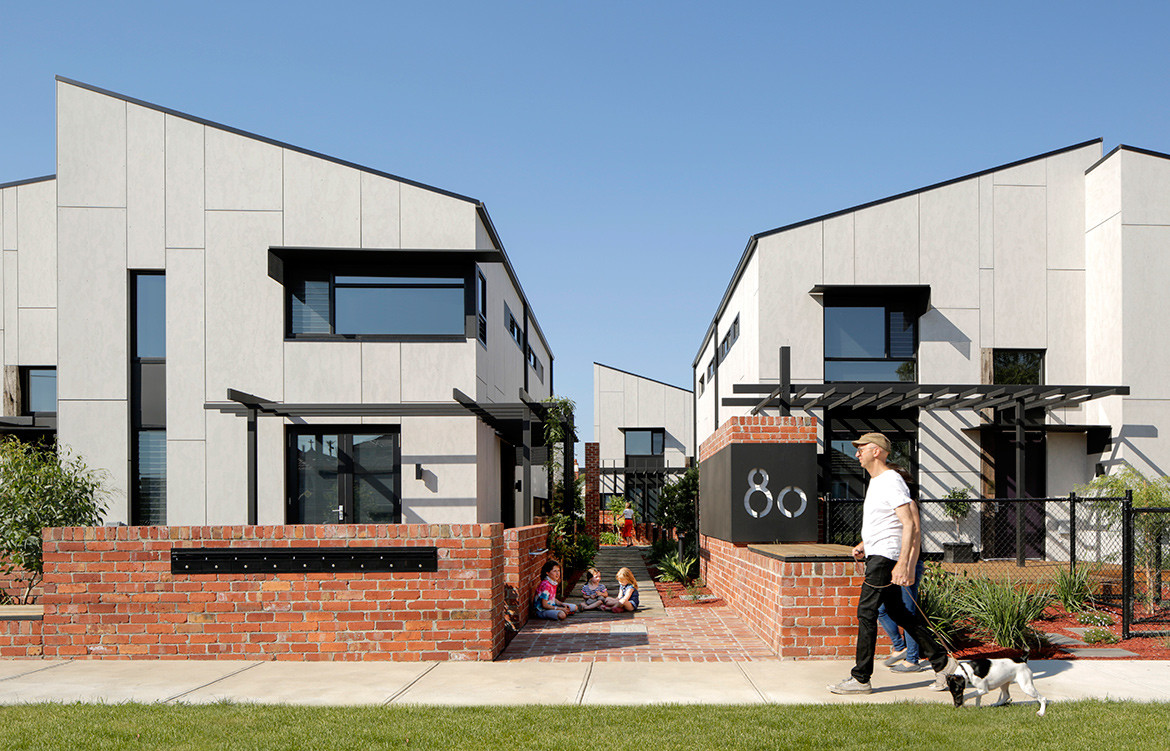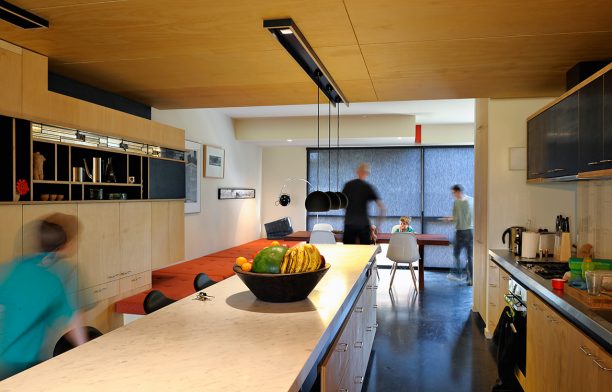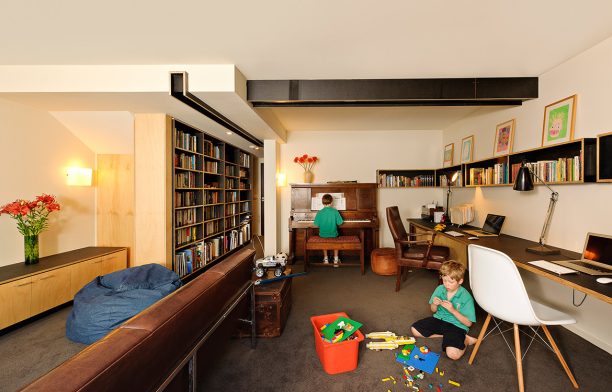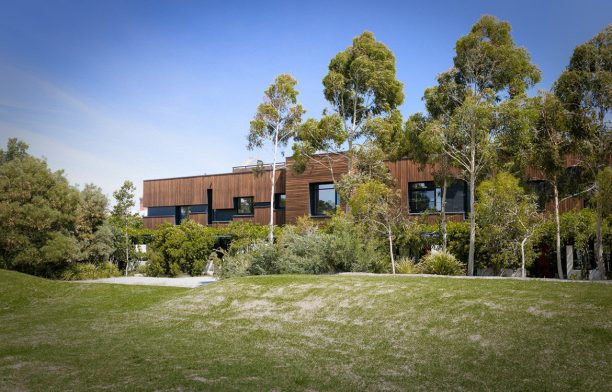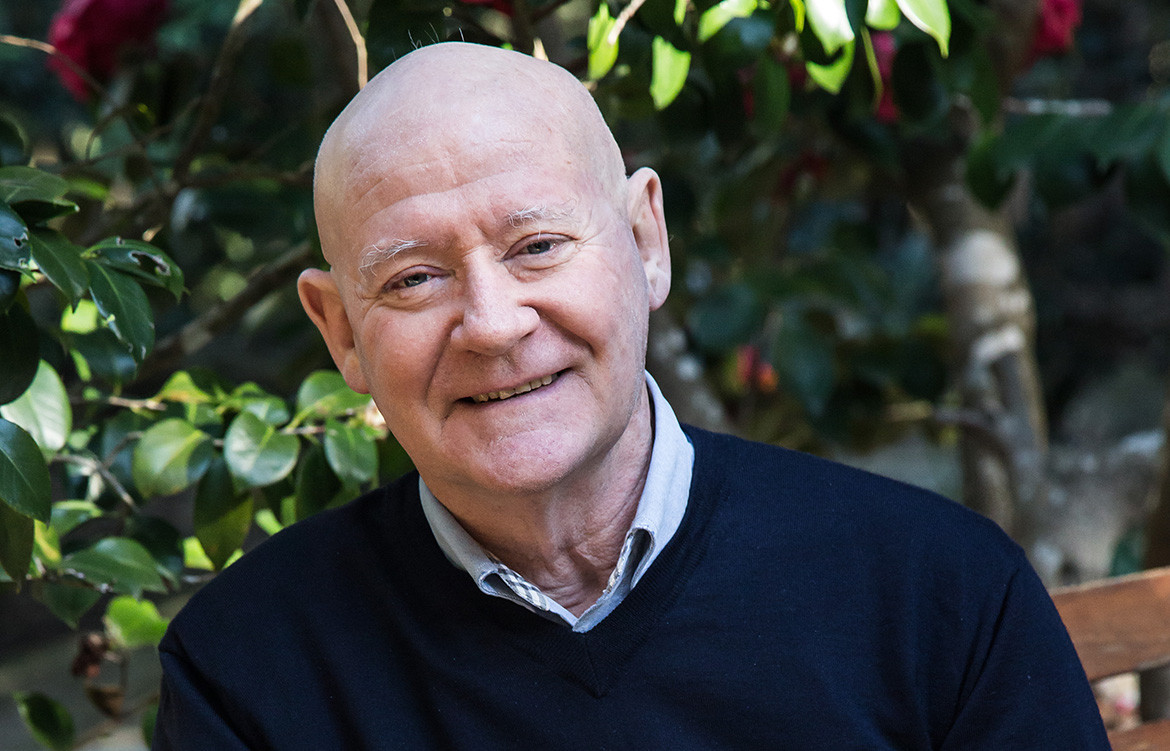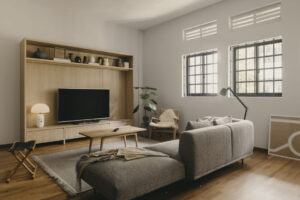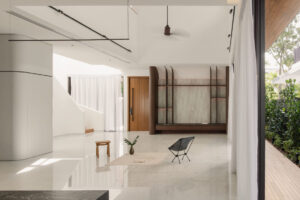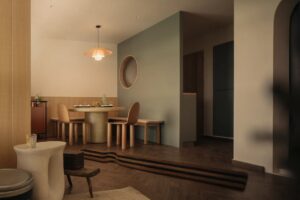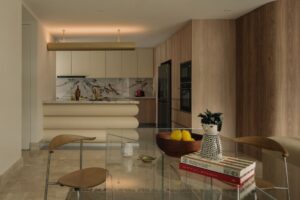The housing crisis is an international phenomenon very much to do with the rapid growth of cities. This growth strains available property resources, forcing prices up and making property less affordable to a growing number of people. Add to this changing social values, stretched infrastructure, and a shifting economic landscape and you have the scenario for developing new housing typologies and re-visiting existing ones to respond to that changing environment.
For Geoffrey London, Professor of Architecture at the University of Western Australia (who is working closely with the Western Australian government agency, Landcorp, to develop new affordable housing models) the issue is: “How can design intelligence be brought to the housing problem?” Such design intelligence, of course, needs to go beyond architecture and address overarching strategic planning and realistic economic models or what Geoffrey refers to as “considered options for the marketplace”.
We know that endless suburban expansion – seen throughout Australia and on the periphery of Asian cities such as Kuala Lumpur – is not sustainable. Instead, we need greater densification within existing urban and suburban areas where infrastructure resources can be concentrated along with employment and social amenities.
We know that endless suburban expansion – seen throughout Australia and on the periphery of Asian cities such as Kuala Lumpur – is not sustainable.
 The Commons by Breathe Architecture, photography by Marnie Hawson
The Commons by Breathe Architecture, photography by Marnie Hawson
As Geoffrey points out, in Australia greyfield infill is starting to occur, but on an ad hoc basis. This has brought with it some architectural innovation, creating greater density that is also liveable – unlike a lot of equally ad hoc medium-density, developer-driven apartment buildings that seem oblivious to notions of community and liveability. By way of contrast, Western Australia’s Landcorp is facilitating the White Gum Valley Housing Project in Perth. Here, in the first phase, individual owners have developed (with architects, spaceagency) their own multi-residential complex. Costs have been reduced by eliminating developer and marketing fees and creating stacked houses with common walls and extensive communal amenities.
This is an example of what is loosely known as the Baugruppe (literally, building group) housing typologies pioneered in Germany. This is basically a financial model and involves placing a cap on profits and eliminating marketing fees and expensive optional extras. It is summed up by Breathe Architects who designed Australia’s first example, Nightingale 1 (The Commons), in Melbourne’s Brunswick: “How can we build a well-designed, community-led building for owner-occupiers, not investors?”
The result was a highly sustainable and more affordable 20-apartment building, now followed by further iterations: Nightingale 2 in Melbourne’s Fairfield (Six Degrees Architects), Nightingale 3 in Melbourne’s Brunswick (Austin Maynard Architects) and Nightingale Fremantle in Western Australia (EHDO) – all architect-designed in collaboration with the potential owners; all highly sustainable; all with a cap on profits for investors; and all eliminating unnecessary features resulting in a 5-10 per cent reduction in costs.
The Baugruppe housing typologies pioneered in Germany. This is a financial model that involves placing a cap on profits and eliminating marketing fees and expensive optional extras.

 The Commons by Breathe Architecture, photography by Marnie Hawson
The Commons by Breathe Architecture, photography by Marnie Hawson
James Legge, a Principal with Six Degrees Architects (whose Heller Street Park and Residences in Melbourne’s inner-suburban Brunswick in 2011 was a fascinating forerunner with 10 townhouses and a merged private and public domain utilising remediated land) has made a special study of new housing typologies.
In a talk on the subject, he prefaced his remarks with a quote from the famed American urbanist, Jane Jacobs: “There is no logic that can be imposed on the city; people make it, and it is to them, not buildings, that we must fit.” James identifies three categories of housing development: Subsidised, At Cost, and For Profit. It is the At Cost models that are relevant to this article and they comprise: Cooperative Development, Deliberative Development (citizen-led), Deliberative Development (architect-led) and Enlightened Speculative Development. These are different development models and may take different forms in terms of financing and architecture. James’s talk focused on a number of German examples which almost certainly flag future developments elsewhere.

Heller St Park + Residences by Six Degrees, photography by Patrick Rodriguez
Typically, some form of co-housing is involved. In Australia (as elsewhere) this involves shared amenity such as community gardens, common rooms and recreation areas and may be driven by any of James development models. An intriguing example of an early co-housing project in Singapore is The Cranes in the precinct of Joo Chiat, which I discussed in my book, Sustainable Luxury (2014). This involved consolidating two traditional shop houses, then restoring and re-developing them over four levels. The complex consists of six apartments with a central common courtyard, a reading room and two communal cooking and dining areas.
The aim was to create a sense of community, not just within the complex, but within the wider Joo Chiat community, connecting with the traditional and authentic character of the area by retaining many of the original features of the shop houses, especially on the streetfront. The developer was a boutique developer (the architects were a special division of the large integrated architectural firm, Ong & Ong). It is an example of James’ Enlightened Speculative Development, as is Melbourne’s The Commons, which began as a Baugruppe project before being taken up by a developer. However, Speculative Development projects are also beginning to re-think the way we live, especially from the point of view of sustainability, community and optimising available plots.

 Clyde Mews by Six Degrees, photography by Alice Hutchison
Clyde Mews by Six Degrees, photography by Alice Hutchison
Six Degrees has designed sustainably focused cluster-housing in the Melbourne suburb of Thornbury. Clyde Mews consists of six townhouses and two apartments linked by walkways. Each dwelling is restricted to one car space and these spaces are located on the periphery of the complex to help integrate the complex as a community. The communal garden is designed as “a shared backyard”, while the complex boasts exemplary sustainable features, including the preferred use of material recycled from site as well as other recycled timber and bricks. Captured water supplies toilets and laundry needs while all the dwellings enjoy solar power and passive heating and cooling systems.
In Melbourne’s Fairfield (just four kilometres from the CBD on the Yarra River and diametrically opposite Nightingale 2) is 71 Station Street, a speculative development by Osten and designed by Cheah Saw Architecture. This project responds to a key issue in densification. Namely, if people are required to live in apartments rather than on quarter-acre blocks, then the experience has to replicate that of a home with amenities such as gardens and outdoor living.
This project sets out to do just that. Designed on a domestic scale, the complex consists of 13 dwellings in four storeys, each one different from the other to create the experience of one’s own unique home. The architects have set out to generate a sense of community within the complex, but also with the village-like character of Fairfield which has a diversity of housing typologies. Hence, the three ground-floor apartments are designed for down-sizers who can enter their home straight off the street and into their own extensive garden, evocative of some of the older villas in the area.

No.71 Station Street by Cheah Saw, photography by Clemence Harvey
Entry to the complex is down a side lane and through a private entry court and a human-scale lobby. The stairway is the main thoroughfare to encourage interaction – a “vertical street”. The smallest units across two levels are on the top floors. They are like townhouses and are aimed at young families and zoned to allow for privacy with the bedrooms on the upper level. Balconies throughout are designed to be outdoor rooms and part of the useable space.
We are now familiar with mixed-use developments which act as de-centralising satellite hubs combining residential with retail, hospitality, recreational facilities, libraries, and medical and child care centres. These represent a new ‘densified’ model of living, arguably superior to the suburban model with its propensity for social alienation. Running in parallel is a growing awareness of the importance of mixing demographics – age, ethnicity, income groups – in the interests of social sustainability and individual wellbeing.
An outstanding variation on this is in Singapore where Kampung Admiralty in the district of Woodland is the first integrated development in Singapore bringing aged care, and public facilities and services together under one roof.


 Kampung Admirality by WOHA, photography by Patrick Bingham-Hall and K. Kopter
Kampung Admirality by WOHA, photography by Patrick Bingham-Hall and K. Kopter
Designed by WOHA, the two 11-storey buildings form a vertical village (kampung) culminating in a community garden on the rooftop. At ground and mezzanine levels is covered public space and a hawkers food area. On the mid-level is a medical centre, while the 104 apartments are custom-designed for independent elderly singles and couples. It is, say the architects, “bringing together young and old to live, eat and play”. This is because the complex also includes a day care centre, thus promoting inter-generational bonding – a model now being explored in Australia that ensures that ageing members of the population remain socially integrated and active.
This article has highlighted just a few examples of new approaches to housing. If there is indeed a housing crisis, perhaps we should start to see it as an opportunity rather than a threat – to explore new ways of living, better aligned to the realities of the age we live in.
We think you might also like Five Of The Best Australian Prefab Homes


